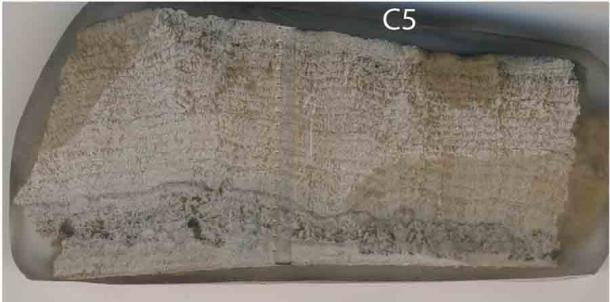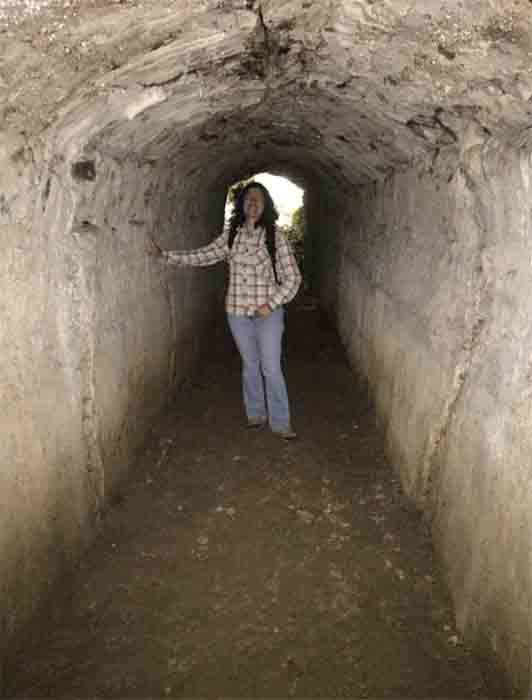Aqueducts have been studied by archaeologists, engineers, architects, and urban planners for centuries. But even now, Roman aqueducts still have fascinating secrets to reveal, as scientists from Johannes Gutenberg University in Mainz, Germany recently discovered when looking at the aqueduct of Constantinople. Seeking to learn more about the aqueduct of Constantinople’s maintenance procedures, a team of researchers affiliated with the Department of Earth Sciences at JGU-Mainz performed an extensive study of the longest Roman aqueduct in existence, which was reported on by Science Alert .
Roman aqueducts evoke feelings of respect and wonder in all who see them. These architectural marvels stand as monuments to Roman creativity, ingenuity, and dedication to quality workmanship. The remnants of these ancient water channels, which ably supplied Roman Empire cities with enough water to meet the needs of all their citizens, can still be found in many places.
The Aqueduct of Constantinople is also known as the Aqueduct of Valens , a 265-mile (426-kilometer) long structure that supplied the city of Constantinople (modern Istanbul) with water for hundreds of years.

Carbonate deposit from the aqueduct of Constantinople showing around 25 annual layers. (Cees Passchier / Johannes Gutenberg-Universität Mainz )
The Aqueduct of Constantinople and Calcium Carbonate Buildup
Led by paleoclimatologist Dr. Gül Sürmelihindi, members of the University’s geoarchaeology group examined various sections of the aqueduct’s channels, searching for signs of calcium carbonate deposits, or limescale.
Over time, these chalky white deposits can build up on rock, brick, concrete, or metal surfaces where water runs. The longer water runs through a copper pipe, for example, the more calcium carbonate deposits will build up inside. Eventually, they can become so thick that water flow is restricted or blocked altogether, at which point a plumber will need to be summoned to clean the pipes.
Limescale buildup could be a problem in aqueducts, too. The spring water harvested for aqueduct transport would have picked up dissolved deposits of calcium carbonate from limestone and other surrounding rocks. When passing through aqueduct channels, it would have left behind a trail of limescale. The continuous flow of water could have resulted in significant limescale accumulation over the years.
The JGU-Mainz researchers were uncertain of how ancient Roman Empire engineers might have dealt with this difficulty, or if they dealt with it at all. By measuring calcium carbonate deposits still found on the now out-of-service aqueduct of Constantinople, they wanted to find out if its water channels had ever been cleaned, and if so, how often.
The spring-fed aqueduct had been used to supply water to Constantinople and the adjacent region for more than 700 years, long after the Roman Empire had fallen. But the layer of calcium carbonate deposits the scientists scraped off its inner surfaces was quite thin. Using their knowledge of ancient water mineral content, the scientists estimated that such a thin deposit would have formed over a period of about 27 years.
“This means the entire aqueduct must have been maintained and cleaned of deposits during the Byzantine Empire , even shortly before it ceased working,” Sürmelihindi explained in a May 11 JGU-Mainz press release that announced her team’s findings.
But one important question remained: how was it done? A comprehensive cleaning of the entire length of the aqueduct would have taken several weeks to complete, at minimum. If the water channels had been shut down for this length of time, severe water shortages would have been experienced in the city.
It didn’t take long for the scientists to find their solution to this riddle. One 31-mile (50-kilometer) stretch of the central section of the aqueduct of Constantinople features a unique double-channel arrangement. One channel passes directly above the other, and the two channels were built to occasionally cross on two-story bridges.
“It is very likely that this [dual channel] system was set up to allow for cleaning and maintenance operations,” geologist and study participant Cees Passchier theorized. “It would have been a costly but practical solution.”
Sadly, the exact workings of this system will have to remain a matter of speculation. In 2020, saboteurs used dynamite to blow up a section of the aqueduct known as the Ballierme Bridge , in the mistaken belief that they would find treasure inside. The destruction of this critical link in the aqueduct chain makes it impossible for researchers to determine how the back-up channel was used when it was in operation.

Dr. Gül Sürmelihindi, lead author of the study, in the main water channel of the 426-kilometer-long (265-mile-long) aqueduct of Constantinople. (Cees Passchier / Johannes Gutenberg-Universität Mainz )
The Aqueduct of Constantinople: Roman Engineering Marvel
The Romans were “famous” innovators in the area of public infrastructure . They built roads, harbors, temples, theaters, and amphitheaters, launching grand municipal development projects that set lasting standards for excellence.
But their water projects stood out.
”The most ground-breaking technical achievement of the Roman Empire lies in its water management, particularly its long-distance aqueducts that delivered water to cities, baths, and mines,” declared Dr. Sürmelihindi.
There are sections of more than 2,000 Roman aqueducts still standing in various places around the world, which is a testament to how well-built these structures were. Among this group, the Aqueduct of Valens (the “formal” name of the aqueduct of Constantinople) represents the Roman Empire’s most impressive achievement.
After Constantine the Great declared Constantinople the new capital of the Roman Empire in 324 AD, there was an immediate need to find new sources of fresh water to supply the needs of a rapidly expanding population. Out of this necessity, the aqueduct project was conceived.
Construction work on the aqueduct was completed in 368 during the reign of the Roman Emperor Valens, and the aqueduct channels were officially opened in 373. Initially, the aqueduct imported water from a spring located 37 miles (60 kilometers) to the west of Constantinople.
In the fifth century AD the structure was expanded to double length, so water could be captured and imported from additional springs. The aqueduct’s vaulted channels were constructed of stone and concrete and were large enough for a person to walk through without stooping. They were supported aboveground by 90 sturdy stone bridges , and the system’s underground tunnels were up to five kilometers long in some locations.
The Aqueduct of Valens was a product of an empire that was highly ambitious, supremely confident, and un-intimidated by even the most daunting logistical challenges.

The two-story Kurşunlugerme Bridge, part of the aqueduct of Constantinople: Two water channels passed over this bridge, one above the other. (Jim Crow / Johannes Gutenberg-Universität Mainz )
The Romans: Masters of an Ancient Technology
The Romans didn’t invent aqueducts. When they built their first one in 312 BC, they used a technology that had been known in Greece, the Near East , and the Nile River Valley for centuries.
But regardless of where they got the idea, there is no question that Roman engineers realized the full potential of the aqueduct concept.
“These aqueducts are mostly known for their impressive bridges, such as the Pont du Gard in southern France, which are still standing today after two millennia,” Passchier noted. “But they are most impressive because of the way problems in their construction were solved, which would be daunting even for modern engineers.”
The Romans were clever and gifted problem-solvers, for certain. They found a way to adapt aqueduct technology to supply a vast empire with all the fresh water it needed to thrive.
Top image: The “downtown” Istanbul Bozdoģan Kemeri bridge is one of the most famous sections of the Roman aqueduct of Constantinople. Source: Laima Gūtmane / CC BY-SA 3.0
By Nathan Falde
Related posts:
Views: 0
 RSS Feed
RSS Feed

















 May 15th, 2021
May 15th, 2021  Awake Goy
Awake Goy  Posted in
Posted in  Tags:
Tags: 
















